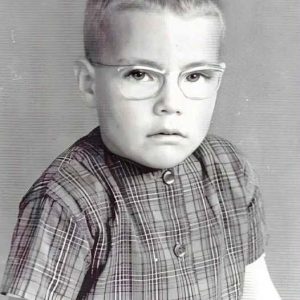Udo Kier’s life began in the rubble of war and unfolded into one of the most distinctive, unpredictable, and enduring careers in international cinema. Born Udo Kierspe in Cologne in 1944, he entered the world just hours before Allied bombs destroyed the very hospital in which he and his mother lay. That dramatic origin, which he spoke of with directness rather than embellishment, became an early symbol of the resilience and strangeness that would shape the rest of his journey. Kier grew up in postwar Germany, poor and fatherless, with no hot water in the home until he was seventeen and with a mother whose life had been reshaped by a truth she did not know at his birth: the man she believed would raise their son already had a family elsewhere. These early years, which Kier later described simply as “horrible,” forged a kind of emotional armor that would come to define the severe beauty of his on-screen presence. Out of these modest, fractured beginnings emerged an actor whose magnetic face—those striking blue eyes, the sharp planes of his features, the dangerous softness of his expressions—would one day become synonymous with art-house horror, underground cinema, and some of the most iconic villains ever put on film.
His path to acting was as unlikely as it was transformative. Kier left Germany for London in his youth, intending only to study English. But his fate changed course inside a simple coffee shop when a film professional approached him, captivated by his unmistakable presence. From that single encounter came the opportunity that launched a fifty-year career. His early roles arrived quickly, but it was the 1970 film Mark of the Devil that thrust him into international cult attention. The movie, notorious for its graphic content and controversial marketing, featured Kier in a performance that showcased exactly what would make him unforgettable: a delicate, eerie beauty paired with an unsettling intensity. His face could suggest vulnerability and threat in equal measure, and directors recognized immediately how rare that combination was. Soon after, his work caught the attention of Andy Warhol and director Paul Morrissey, who cast him in the outrageous, stylized cult classics Flesh for Frankenstein (1973) and Blood for Dracula (1974). These films, equal parts grotesque, seductive, and absurd, defined Kier’s early international persona. He became not just an actor, but an icon of the art-house underground—a figure whose very appearance carried narrative weight.
Over the next five decades, Kier’s career expanded with astonishing breadth and craftsmanship. He appeared in over 275 films, a number as impressive as it is unusual, and collaborated with some of the world’s most distinctive and visionary directors. Rainer Werner Fassbinder cast him in Lili Marleen; Werner Herzog brought him into My Son, My Son, What Have Ye Done; Walerian Borowczyk drew on his enigmatic presence in Lulu; and Gus Van Sant featured him in both My Own Private Idaho and Even Cowgirls Get the Blues. Lars von Trier repeatedly returned to him—casting Kier in Dogville, Manderlay, and the apocalyptic drama Melancholia—and Rob Zombie brought his sinister charisma into the gritty world of Halloween. These collaborations were not coincidences but affirmations of Kier’s singular appeal. Directors sought him when they needed an actor who could convey danger, fragility, perversity, elegance, or madness—sometimes all within the same scene. His performances could be icily controlled or explosively theatrical, depending on what the story demanded. He played vampires, Nazis, madmen, corrupt aristocrats, cult leaders, and characters whose motivations hovered somewhere between the monstrous and the divine.
Despite the menacing and often extreme nature of many of his roles, Kier himself was known for his wit, warmth, and self-awareness. He spoke candidly about the bizarre turns of his career, the strange and wonderful sets he had worked on, and the joy he felt in accepting nearly every role that came his way. Acting, for Kier, was not merely a profession but an ongoing state of reinvention. He delighted in transformation—sometimes campy, sometimes terrifying, sometimes quietly human. He often joked that roles found him, rather than the other way around. Yet beneath the humor was a profound appreciation for the creative life he had carved out from a childhood that seemed to offer no path toward artistry whatsoever. Even as he became a staple of horror and genre cinema, he retained the ability to surprise audiences, slipping into comedic roles or emotional supporting characters that revealed unexpected depths. His interviews brimmed with reflections on art, endurance, and the unpredictability of the film industry, and he maintained an openness that endeared him to peers and fans alike.
In the later years of his career, Kier experienced something of a renaissance as younger filmmakers rediscovered his legacy and recognized the breadth of what he could bring to the screen. One of the most celebrated examples was his leading role in the 2019 film Swan Song, where he portrayed a former hairdresser escaping a nursing home for one final styling job. In this performance, Kier unveiled a vulnerability that had always lived beneath the surface of his villainous characters—a tender, humorous, melancholic humanity that critics praised widely. It was the kind of role that allowed him to step outside the archetypes he had so often embodied and to show the emotional nuance, wit, and gravitas that had sometimes been overshadowed by the intensity of his horror personas. Swan Song introduced him to many viewers who had never encountered the earlier extremes of his filmography, and it reminded longtime fans that Kier was, above all, a versatile and deeply committed performer. He continued working steadily through the 2010s and 2020s, driven not by necessity but by passion. Acting, as he often said, was his joy—the one place where he could live countless lives beyond the one he was born into.
Udo Kier’s death in Palm Springs at the age of eighty-one marks the end of a cinematic era defined by fearlessness, experimentation, and the strange beauty of a career unlike any other. His partner, Delbert McBride, confirmed his passing, and tributes poured in from across the film world as colleagues, fans, and admirers reflected on the impossible-to-duplicate combination of elegance and eeriness he brought to every project. Kier was, in many ways, the embodiment of a certain kind of European art-house mystique—an actor who could elevate camp to poetry, who could make the grotesque tragic, who could take even a brief appearance and turn it into the most memorable moment of a film. His legacy stretches beyond his vast filmography; it lives in the generations of filmmakers inspired by his bold choices, in the audiences who felt spellbound by his presence, and in the history of cinema that now feels marked by his absence. From the ruins of wartime Germany to the stages of international film festivals, Udo Kier’s journey stands as a testament to the power of reinvention. He survived a world that nearly collapsed around him at birth, transformed that resilience into art, and spent decades giving life to characters who were shocking, haunting, unforgettable, and entirely his own. His passing closes an extraordinary chapter, but the shadows he cast on screen—strange, beautiful, and indelible—will endure for generations.






